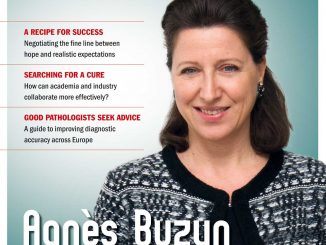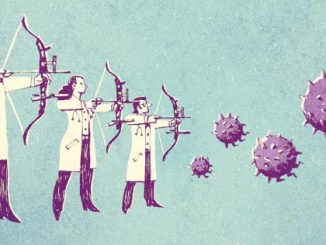 Many of our most profound insights into the nature of cancer and its treatment have originated in the field of haematology. It was the high levels of bone marrow toxicity among soldiers who had been exposed to mustard gas in in World War II that first alerted researchers to the potential of chemotherapy.
Many of our most profound insights into the nature of cancer and its treatment have originated in the field of haematology. It was the high levels of bone marrow toxicity among soldiers who had been exposed to mustard gas in in World War II that first alerted researchers to the potential of chemotherapy.
The unexpected findings of benefit from systemic cancer treatment was first shown in the treatment of childhood leukaemia and Hodgkin’s disease, as the latter was called when its cancerous origin was not yet understood.
For a long time afterwards, the screening of drugs for potential anti-cancer action favoured agents that suppressed bone marrow activity.
While these aspects of our early history may be familiar to most oncologists, the same cannot be said for many profound insights into new paradigms of precision medicine that are emanating from the field of haematology today, which is why Cancer World has chosen this topic for its Cover Story.
Over the past 15 years, a number of solid tumours – malignant melanoma, renal cell cancer, some sarcomas, a few subtypes of non-small-cell lung cancer – supplanted blood cancers as the setting for exploring and understanding the use of new precision therapies. Today, however, blood cancers are again becoming the favoured model for learning basic lessons about cancer biology and ways to intervene.
The potential of PD-1/PD-L1 checkpoint inhibitors was first demonstrated in patients with Hodgkin lymphoma who had already gone through many lines of treatment, and the prospect of a 100% cure rate is now in sight. In multiple myeloma and chronic lymphocytic leukaemia, two diseases where 20 years ago we had little to offer patients, our biologic understanding has recently grown exponentially, with an explosion of new treatment possibilities. The concept of a chemo-free systemic therapy – now on the horizon for melanoma and renal cancers – was developed first in follicular lymphoma, on the back of the very-long-term remissions achieved in patients treated with the monoclonal antibody rituximab.
Haematologic tumours are also the model to test the paradigm of long-term, potentially lifelong, systemic therapies, which may yet become ‘the rule’ for treating advanced solid tumours – with all the associated issues of cost and adherence. Chronic myelogenous leukeamia is the paradigm example, where the possibility of lifelong treatment with imatinib means the great majority of patients no longer need allogeneic transplantation.
One of the challenges the oncology community now faces is how to spread the new insights coming out of haematological cancers to the far larger field of solid tumours. Unlike the early days of chemotherapy, when fear of using these ‘very toxic drugs’ meant that medical oncologists were left to take the lead in caring for lymphoma and leukaemia patients, today medical oncologists increasingly deal only with solid tumours. As someone who benefited from training in both blood and solid tumours, I feel this sharp divide risks denying new generations of oncologists a basic grounding in tumour biology and biology in general. Haemato-oncology should be an integral part of any training in medical oncology – as indeed has always been the case for ESO’s own flagship Clinical Oncology Masterclass.
Franco Cavalli is Scientific Director
of the Oncology Institute of Southern Switzerland,
and founding Editor of Annals of Oncology




